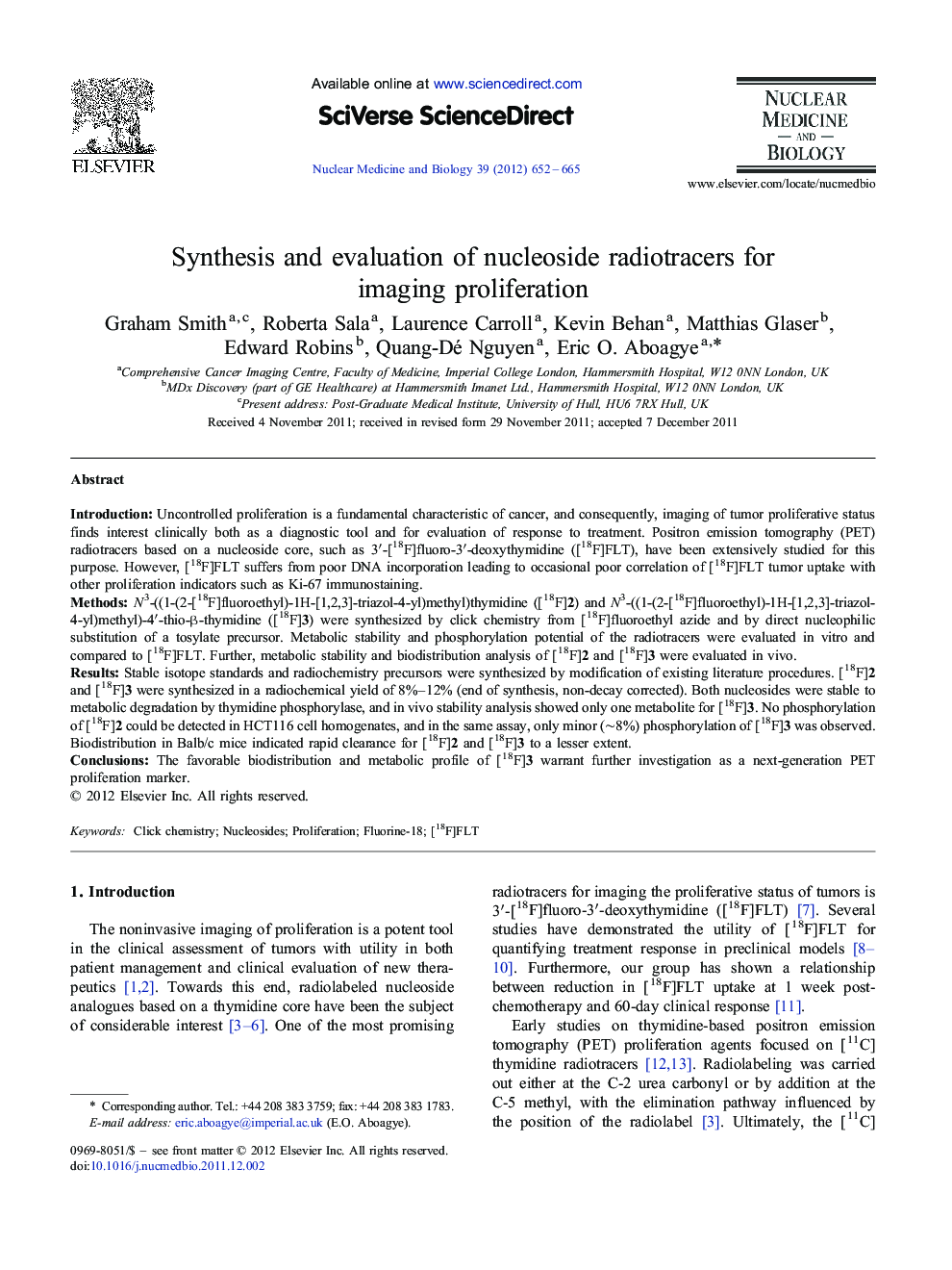| کد مقاله | کد نشریه | سال انتشار | مقاله انگلیسی | نسخه تمام متن |
|---|---|---|---|---|
| 2153740 | 1090203 | 2012 | 14 صفحه PDF | دانلود رایگان |

IntroductionUncontrolled proliferation is a fundamental characteristic of cancer, and consequently, imaging of tumor proliferative status finds interest clinically both as a diagnostic tool and for evaluation of response to treatment. Positron emission tomography (PET) radiotracers based on a nucleoside core, such as 3′-[18F]fluoro-3′-deoxythymidine ([18F]FLT), have been extensively studied for this purpose. However, [18F]FLT suffers from poor DNA incorporation leading to occasional poor correlation of [18F]FLT tumor uptake with other proliferation indicators such as Ki-67 immunostaining.MethodsN3-((1-(2-[18F]fluoroethyl)-1H-[1,2,3]-triazol-4-yl)methyl)thymidine ([18F]2) and N3-((1-(2-[18F]fluoroethyl)-1H-[1,2,3]-triazol-4-yl)methyl)-4′-thio-β-thymidine ([18F]3) were synthesized by click chemistry from [18F]fluoroethyl azide and by direct nucleophilic substitution of a tosylate precursor. Metabolic stability and phosphorylation potential of the radiotracers were evaluated in vitro and compared to [18F]FLT. Further, metabolic stability and biodistribution analysis of [18F]2 and [18F]3 were evaluated in vivo.ResultsStable isotope standards and radiochemistry precursors were synthesized by modification of existing literature procedures. [18F]2 and [18F]3 were synthesized in a radiochemical yield of 8%–12% (end of synthesis, non-decay corrected). Both nucleosides were stable to metabolic degradation by thymidine phosphorylase, and in vivo stability analysis showed only one metabolite for [18F]3. No phosphorylation of [18F]2 could be detected in HCT116 cell homogenates, and in the same assay, only minor (∼8%) phosphorylation of [18F]3 was observed. Biodistribution in Balb/c mice indicated rapid clearance for [18F]2 and [18F]3 to a lesser extent.ConclusionsThe favorable biodistribution and metabolic profile of [18F]3 warrant further investigation as a next-generation PET proliferation marker.
Journal: Nuclear Medicine and Biology - Volume 39, Issue 5, July 2012, Pages 652–665